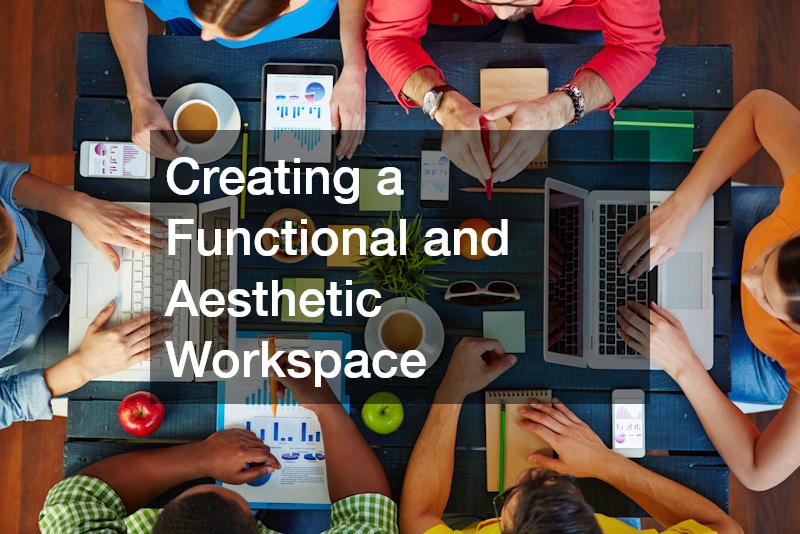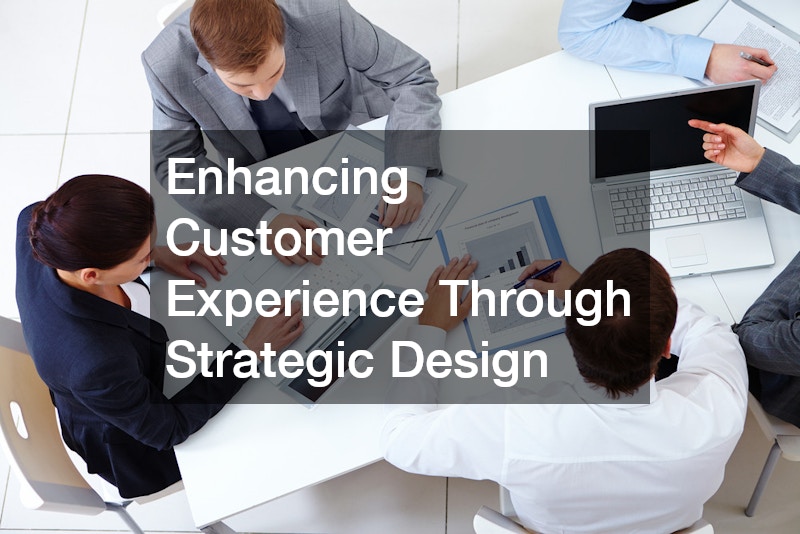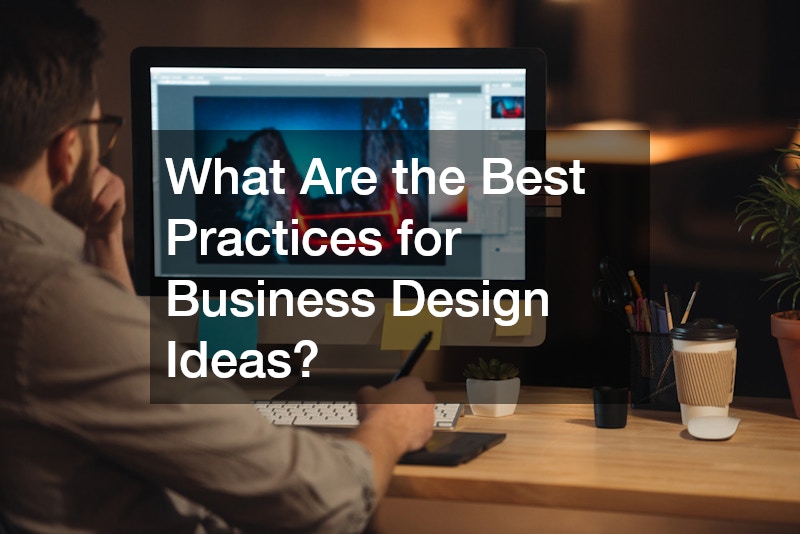Creating a Brand Identity
Effective business design ideas are essential for creating a cohesive and impactful business strategy. A well-executed design can elevate a company’s brand presence, improve customer engagement, and optimize internal processes, making the business more adaptable to changes in the market. When thinking about business design, it’s important to consider a wide range of factors, from the physical layout of a workspace to the technological infrastructure that supports daily operations. Moreover, the design must be aligned with the company’s core values and long-term objectives to ensure sustainability.
For businesses across industries, from service-oriented companies to manufacturing firms, these principles of design apply. Whether the focus is on branding, functionality, or technology integration, a clear design vision ensures consistency and efficiency. Through careful consideration of these best practices, companies can streamline their operations and enhance customer satisfaction, ultimately driving success.

Identifying the Core Values of Your Business
When beginning the process of developing strong business design ideas, it’s crucial to first identify the core values of your business. These values serve as the foundation for all subsequent decisions, including design choices, branding, and how you interact with your customers. The core values should reflect the mission of your company, guiding how it operates both internally and externally. Once defined, these values should be integrated into every aspect of the business design. From the physical environment to the digital presence, aligning your design with these core values creates a cohesive experience that strengthens brand identity and fosters customer loyalty. In any industry, a clear sense of purpose and values will make design choices more authentic and meaningful.
For a water treatment company, for example, core values like sustainability, reliability, and innovation may guide how the business structures its design. These values could manifest in eco-friendly office designs, energy-efficient equipment, or green technologies integrated into operations. By ensuring that the company’s business design ideas align with sustainability goals, the water treatment company reinforces its brand image and commitment to the environment, creating a stronger connection with eco-conscious consumers.
Defining Your Target Audience for Effective Design
Understanding and defining your target audience is one of the most essential steps in developing successful business design ideas. Every decision in business design, from the color palette to the layout of a physical space, should be made with the target audience in mind. The audience’s preferences, needs, and expectations help shape the tone and functionality of the business design. An effective design will resonate with customers and make them feel connected to the brand. By knowing who your customers are and what they are looking for, a business can create a space or digital presence that not only meets their needs but also exceeds their expectations.
For a commercial HVAC company, identifying the target audience could involve understanding the unique needs of businesses seeking reliable, large-scale climate control solutions. In this case, the business design ideas should focus on professionalism, efficiency, and trustworthiness. This might include creating a user-friendly website with clear service descriptions and customer testimonials or designing a well-organized, easy-to-navigate showroom that highlights various HVAC systems.

Incorporating Branding Elements Into Your Design
Incorporating branding elements is a key step in developing cohesive business design ideas. Branding goes beyond just logos and colors; it encompasses the entire look and feel of the company’s physical and digital presence. Successful business design incorporates branding into every aspect of its operations to ensure consistency. This includes visual aspects like signage, office layout, and marketing materials, but it also extends to customer interaction, tone of voice in communications, and even the choice of technology. The goal is to make the brand instantly recognizable and relatable, making it easier for customers to identify with the company and its values. A well-branded design helps businesses stand out in competitive markets, offering a consistent and memorable experience to their customers.
For a local garage door company, branding elements might include using specific color schemes and fonts across its website, vehicles, and marketing collateral to establish a recognizable identity in the community. The design could incorporate visual representations of strength, security, and durability, reflecting the reliability of the products. In this case, business design ideas may also focus on creating a welcoming showroom that highlights various door styles while reinforcing the company’s local presence.
Streamlining Business Processes Through Design
A core principle of effective business design ideas is streamlining business processes to improve operational efficiency. Thoughtful design can reduce bottlenecks, improve workflow, and enhance communication across teams. Whether it’s the layout of a physical workspace, the organization of digital platforms, or the implementation of automation, design should work to simplify and optimize daily operations. Clear and efficient processes make it easier for teams to collaborate, reduce errors, and ultimately increase productivity. For many businesses, taking a design-focused approach to streamlining processes can lead to significant cost savings, allowing the company to allocate more resources to growth and development.
For an excavation company, streamlining processes through design might involve using specialized software to manage project timelines and resources more effectively. This could also include creating a physical layout for equipment storage that allows for faster mobilization of machinery to job sites. Business design ideas in this case might focus on minimizing downtime between projects by ensuring that processes—both in the office and on-site—are designed for maximum efficiency.

Creating a Functional and Aesthetic Workspace
A well-designed workspace should strike a balance between functionality and aesthetics. The physical environment in which employees work can have a profound impact on their productivity, morale, and overall job satisfaction. Business design ideas should aim to create spaces that support the tasks being performed while also fostering a pleasant and motivating atmosphere. Functionality ensures that the workspace supports daily operations, with adequate lighting, ergonomic furniture, and efficient layouts that enhance workflow. Meanwhile, aesthetics, such as thoughtful use of color, natural elements, and comfortable spaces, contribute to a positive working environment that boosts employee well-being and creativity.
For a local fence company, creating a functional and aesthetic workspace might mean designing an office space where employees can efficiently manage client consultations, scheduling, and materials ordering, while also including a visually appealing showroom that displays fencing options. A well-organized, accessible workspace could also help the team manage construction projects more effectively by housing materials intuitively and practically.
Integrating Technology Into Your Business Design
In today’s rapidly evolving business environment, integrating technology into your business design ideas is critical for staying competitive and improving operational efficiency. Technology can streamline processes, enhance customer interaction, and provide data-driven insights that support growth. From cloud-based systems to AI-driven tools, the integration of technology in the design should complement both internal operations and customer-facing platforms. A strong technology foundation enables businesses to adapt quickly to market changes, automate routine tasks, and offer more personalized services to their clients. Effective business design includes not only the use of technology but also ensuring that it is user-friendly and scalable as the company grows.
For paving companies, integrating technology might involve using advanced project management software that tracks timelines, costs, and resources for paving projects in real time. Additionally, they could employ GPS-enabled equipment for more precise work on-site, increasing efficiency and reducing human error. Customer-facing technology such as an interactive website with service calculators or a client portal for project updates can further improve the client experience.

Enhancing Customer Experience Through Strategic Design
Strategic business design ideas play a significant role in enhancing customer experience, which is critical for building loyalty and growing a business. A customer-centric design ensures that every touchpoint with the business, from the website to the in-store experience, is intuitive, engaging, and tailored to customer needs. The design should make it easy for customers to find information, make purchases, or book services. The well-executed business design also includes personalized features that help build stronger connections with customers. By focusing on creating a seamless and enjoyable experience, businesses can differentiate themselves in competitive markets and encourage repeat business.
For a power washing company, strategic design to enhance customer experience could involve creating an easy-to-navigate website where clients can schedule services online, view past projects, and read customer reviews. This design might also include automated follow-up communications to remind customers of recurring services or check in on their satisfaction. On-site, the design could extend to branded, professional uniforms and vehicles that reflect the company’s commitment to quality service.
Adapting Your Design to Market Trends
Adapting business design ideas to evolving market trends is essential for remaining relevant and competitive. Trends can affect everything from the services a business offers to the way customers expect to interact with a brand. Companies that keep their design flexible and adaptable are better positioned to respond to changes in customer behavior, emerging technologies, and industry shifts. Whether it’s adjusting the design of a product line, updating marketing strategies, or rethinking a workspace to accommodate new business practices, being responsive to trends helps businesses maintain a fresh and forward-thinking image. Staying attuned to the latest market developments ensures that business design remains modern and customer-focused.
For local sod companies, adapting the design to market trends might involve embracing the growing demand for environmentally sustainable products. This could include designing marketing materials that highlight eco-friendly sod options or revamping the website to focus on sustainable landscaping solutions. Another business design idea might be offering digital consultations or using drone technology to assess large properties remotely.
Ensuring Flexibility and Scalability in Design Ideas
One of the key best practices in developing business design ideas is ensuring that your design is both flexible and scalable. Flexibility allows a business to adapt to changing circumstances, whether they involve market shifts, technological advancements, or customer needs. Scalable design ensures that as the business grows, its systems, processes, and physical spaces can grow with it without requiring a complete overhaul. Designing with these concepts in mind can save time, money, and resources in the long term, as it prevents the need for frequent redesigns or restructuring. The ability to modify and expand on initial design ideas allows businesses to stay agile and responsive in a dynamic marketplace.
For a sign company, scalability might involve creating a modular production space that can accommodate larger projects as demand increases. This design could also include a flexible showroom layout that can change to feature new products as the business evolves. Additionally, ensuring that digital platforms like websites or e-commerce systems can handle increased traffic as the business grows is essential for maintaining seamless operations.
Aligning Design Concepts With Long-Term Business Goals
When developing business design ideas, it’s essential to align design concepts with the company’s long-term goals. A well-thought-out design should not only meet immediate needs but also support the broader vision for where the business aims to be in the future. Whether it’s expanding to new markets, introducing innovative services, or increasing operational efficiency, the design should facilitate growth and success over time. This means considering factors like scalability, sustainability, and customer engagement in the design process to ensure that today’s choices will support tomorrow’s goals. By aligning design with long-term objectives, businesses can create a roadmap for sustained success and market leadership.
For a septic tank pumping company, aligning design concepts with long-term goals might involve investing in eco-friendly waste management systems or creating a brand image that reflects reliability and sustainability. The company’s business design ideas could also include digital tools for scheduling and client management, helping to streamline operations as the business expands.
Implementing New Design Changes
Incorporating best practices into business design ideas is crucial for creating a solid foundation for growth, adaptability, and customer engagement. Each business, regardless of its industry, must consider a range of factors, from the integration of core values and branding to the use of technology and market trends. By thoughtfully designing a business’s physical spaces, digital presence, and processes, companies can create environments that are not only functional but also deeply aligned with their identity and goals. This approach not only supports internal efficiency but also enhances the overall customer experience, helping businesses build lasting relationships with clients.

